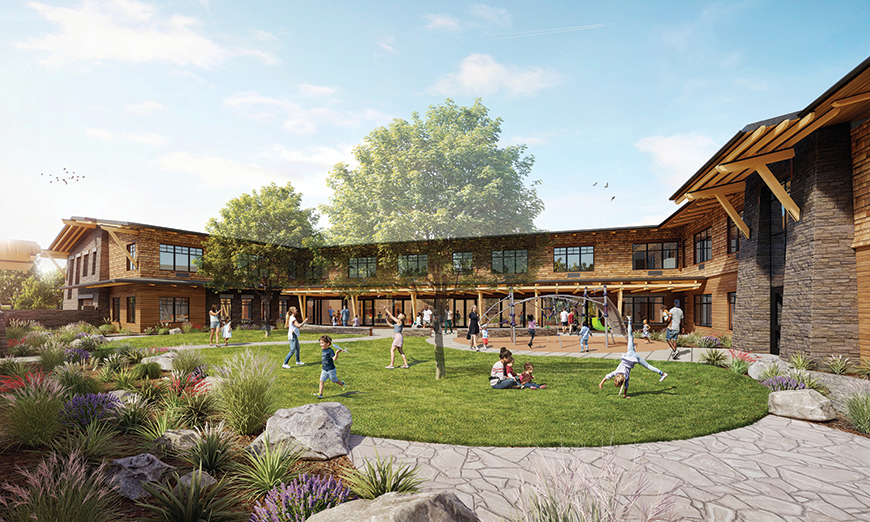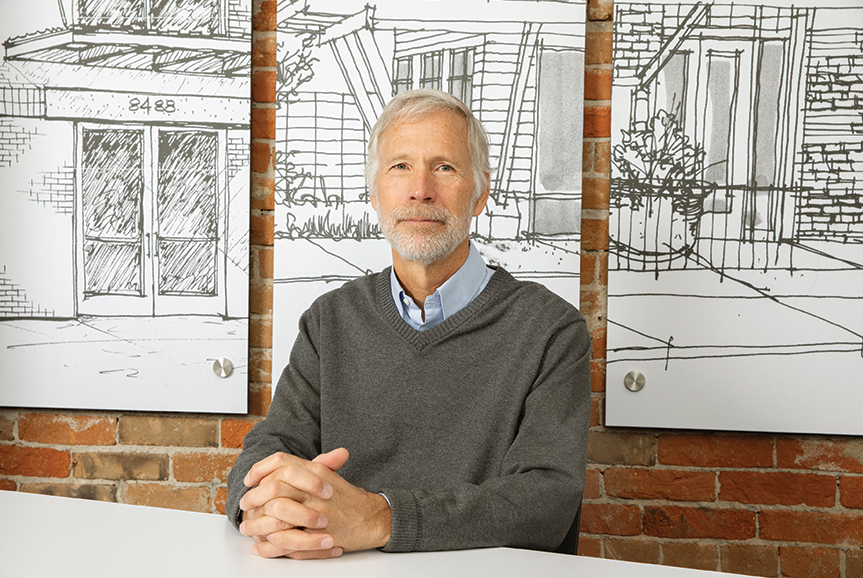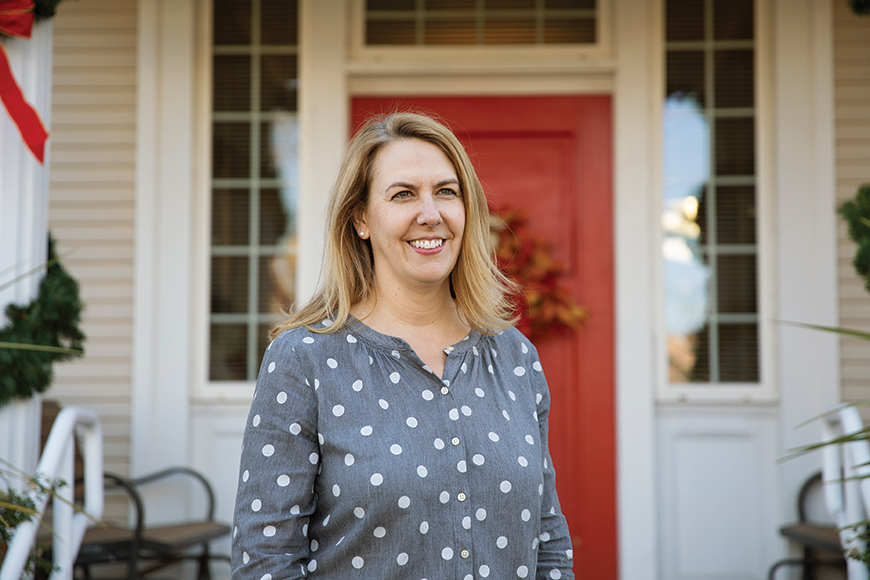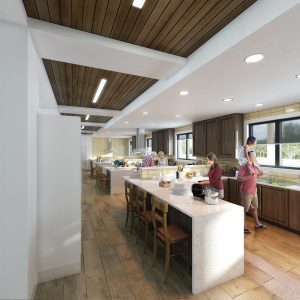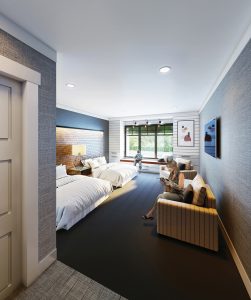If you have traveled through the confluence of Main Street, Idaho Street, Broadway Avenue, and Warm Springs Avenue in Boise lately, you have likely viewed more than one massive construction project in progess.
St. Luke’s new Idaho Elks Children’s Pavilion animates the area with modern interpretations of woodland creatures. Historic homes have been moved to make way for future technologies. A 360-degree view of this intersection is like a microcosm of present-day life in Boise: it’s rapidly changing.
Growth certainly brings challenges, but opportunities, too. The new Children’s Pavilion expanded pediatric services by 100,000 square feet. New specialists have arrived to the relief of those who have traveled for treatments. As medical services in Boise have grown, so has the need to support those using them.
- Stan Cole, founding principal Cole Architects.
- Mindy Plumlee, Executive Director Ronald McDonald House Charities of Idaho
The St. Luke’s campus is situated among one of the oldest neighborhoods in Boise. Several historic gems dot the streets around the hospital, yet one house in particular stands out. Built in 1890, formerly the Nicholson Family home, you probably know 101 Warm Springs Ave. as the Ronald McDonald House.
The Ronald McDonald House Charities of Idaho (referred to as the House) is downright charming. Spend a few moments near the entry and you’ll see weary faces light up at the site of that old familiar clown. Walk in the front door and you’ll wonder: does it always smell like freshly baked cookies in here? Apparently, the answer is yes.
The current House has served families from southern Idaho and eastern Oregon since its founding in 1988. Like many entities in Idaho, the House exists, in part, because of J.R. Simplot. Working with the Nicholson family, Simplot purchased their home and gifted it to the fledgling nonprofit so they could open their doors debt-free.
The mission is simple: to keep families together in times of medical need. The practical application of that mission, however, is anything but simple. The House offers housing for a mere $10 per night, including warm meals, toiletries, transportation, and, most importantly, time together as
a family.
- Rendering courtesy Cole Architects
- Rendering courtesy Cole Architects
The heartbreaking reality is the existing 17-room house no longer meets the needs of a growing region with state-of-the-art pediatric medical care. In 2018, the organization turned away 82 families. Now, in 2019, they have turned away even more. A new, much-larger, House was urgently needed.
Mindy Plumlee, the longtime executive director of the House, offered insight into the changing landscape of medical care in Idaho. “There are phenomenal pediatric specialty doctors living in Boise right now. People travel from around the world to get care from these physicians. They could live anywhere; they choose to live in Boise.”
This situation is not uncommon. The House recently hosted a family that drove from the Midwest to Boise to see a specific neurotherapy physician.
Plumlee further explained that nearly half of the families lodging at the House do not have transportation. Sometimes they arrive via air ambulance, or the car is left at home for someone else to use. If a child is receiving care at Saint Alphonsus, the House pays for their transportation to and from the hospital.
“Take the Wiggins family from Franklin, Idaho. They drive five hours to take their son for treatment at St. Luke’s. The thought of them getting back in the car to drive home is really problematic. It’s exhausting for their son and leaves mom unable to rest and take care of herself, too,” Plumlee said.
Five hours in the car with any child can be trying, but transporting a medically fragile child is something else entirely. Just the thought of turning these families away spurred Plumlee and the House board of directors into action nearly seven years ago.
“The expansion committee started with a few guiding principles,” Plumlee said. “First, we need a new House by the children’s hospital, we need everyone under one roof, and we need to be mindful that we are a community asset.” Going back to that chaotic intersection, there really was only one option that met the principles set forth by the committee. And it was just next door.
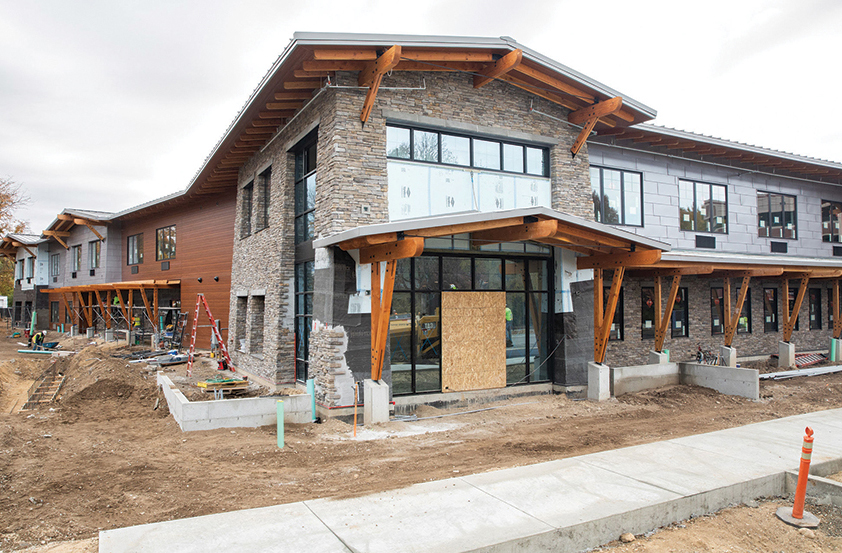
The new Ronald McDonald House is scheduled to open in February.
Fortuitously, St. Luke’s owned a large plot adjacent to the current House and was interested in a swap. The current House became St. Luke’s property and will eventually serve a similar function. Plumlee acknowledged how fast this stage of the process has moved: “It was barely a year ago that we completed the land swap discussion. It’s going to be awesome for the hospital because they get a turnkey facility where they can immediately provide housing for families of adult patients.”
The expansion committee eventually moved into the fundraising phase, with a $15.3 million goal. Once the bulk of the money was raised, emphasis shifted to creating the construction team. In order for this building to be completed in the one-year timeframe the House needed, it had to be just the right people on the job. “It was very exciting. We have been doing this planning for years, and what are the chances that everything comes together at once? The right land, the right architect, the right contractor. We were not going to miss this opportunity,” said Plumlee.
Enter Stan Cole of Cole Architects. Cole has been involved with the House for years, serving as the architect on the last remodel in the late 1990s. Cole and Plumlee toured several newly constructed Ronald McDonald Houses on the West Coast, carefully noting what worked and what didn’t. Cole explained that sustainability was a guiding principle in the design of the building: “The material choices were very purposeful. It’s basically a craftsman-style design with some very modern flare in terms of materials. For example, using metal instead of wood. We did not want the Ronald McDonald House to be faced with ongoing maintenance so we used very durable materials. We were creating a 50- to 75-year building.”
While sustainability was a major factor in the design, how people deal with grief, anxiety, and crisis was another. “Everybody has their own way to cope and some people need the interaction and some people want to be totally independent,” Cole explained. The design team created “breakout spaces” on each floor. The private nooks have daylight access and comfortable seating not too far away from the guest suites. “We gave people a place to come outside of their room—but not within the major traffic areas—to have their own private space.”
Cole was quick to point out the generosity and hard work of others. Nearly every entity involved in this project offered reduced rates, in-kind work, or complete donations of goods and services. “It’s been one of those projects that you’ll remember for a long time,” he said. “Giving back to the community through your profession is something we can all be proud of. We were a part of a project that’s going to provide vital services for families that really need it.”
Engineered Structures Inc. (ESI) was hired to construct Cole’s design. “We were really thoughtful about the process of selecting a contractor,” Plumlee said. “ESI cares about our mission and approaches everything from the standpoint of what it means to the families. They were the right fit, the best fit.”
Like Cole, Corey Hockersmith, superintendent, and Heather Meyers, project manager, were eager to share stories of kindness from the project. “We went out to bid and everyone was asked if they would like to donate,” Meyers said. “The subcontractors have been very generous in their donations, which helps to bring the total cost of the house down. And every cent we save on building the house goes into their operating budget so they can provide more services to families.”
Stepping through the new front entryway, a family will find a bright, open space designed to make them feel at home. And with 47 guest suites, no one will be turned away. A family intake room will allow the staff to meet privately with a family and get them quickly settled in. The new house also has dedicated staff and volunteer offices. Currently, the staff are housed in whatever spaces work (or kind of work). For example, Plumlee’s current office is located in an enclosed porch off the dining room.
Past the intake room, the building opens up into a grand living/dining area. Floor to ceiling windows frame what will be every child’s dream backyard. The design is thoughtful and clearly informed by the physical and emotional needs of the families. The dining room sits adjacent to the children’s play area. The two spaces are separated by a single glass wall, giving adults the ability to linger in the dining room to converse away from little ears, all while being able to keep a watchful eye on the playroom.
When a family endures a medical crisis with one child, siblings often get lost in the shuffle. The new house has playrooms, a teen game room, and a secret toy closet. Meyers smiled wide as she shared this special feature. “It is going to look like a bookcase and they will have a special wand to tap on the door, which will open it into this hidden room full of toys.”
Four beautiful, fully appointed kitchens will replace the one, awkwardly shaped kitchen in the current house. Beyond the beauty, the function of the new building is going to relieve so many burdens for the families. The new house includes commercial and residential laundry rooms, an elevator, private and public lounge areas, and space for volunteers to bake those cookies.
The 47 new guest suites will come with brand new furniture, all of it donated. The rooms don’t feel like a hotel, or worse, a hospital room. Nothing about the rooms feels transactional—they are meant to be lived in. If you were the young mother who arrived by air ambulance to deliver a premature baby and lived at the house for 120 days (true story), this new space has been created specifically for your unique situation.
The new house includes a family “day use” room for those from the Treasure Valley who don’t need overnight accommodations but need a place to relax, refresh, play, and eat during a long day of outpatient treatments.
The projected opening date of the new house is Feb. 1, 2020, just one year from breaking ground. It is jaw dropping when you think about it. “We are just turning away so many people,” Plumlee explained. Meyers and Hockersmith nodded in agreement. “Knowing that families are being turned away daily is very motivating,” Meyers said.

